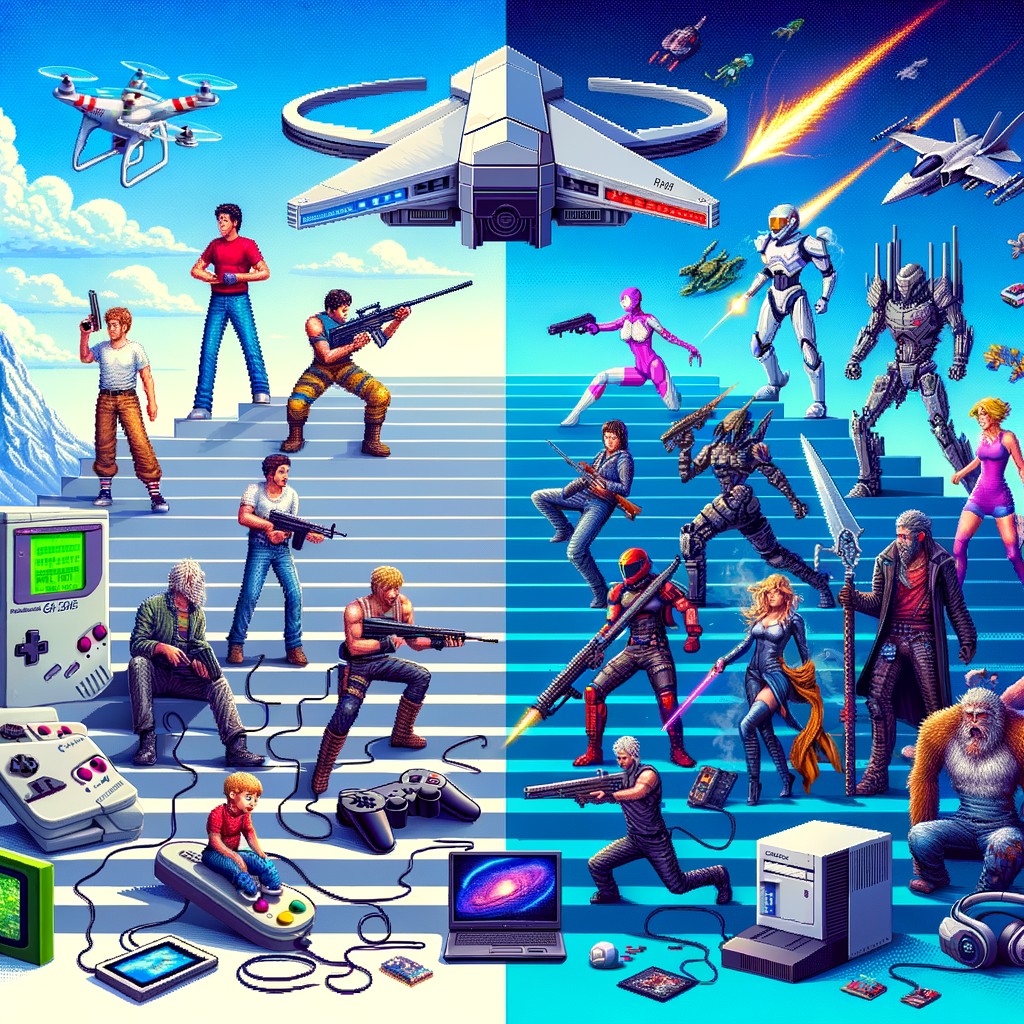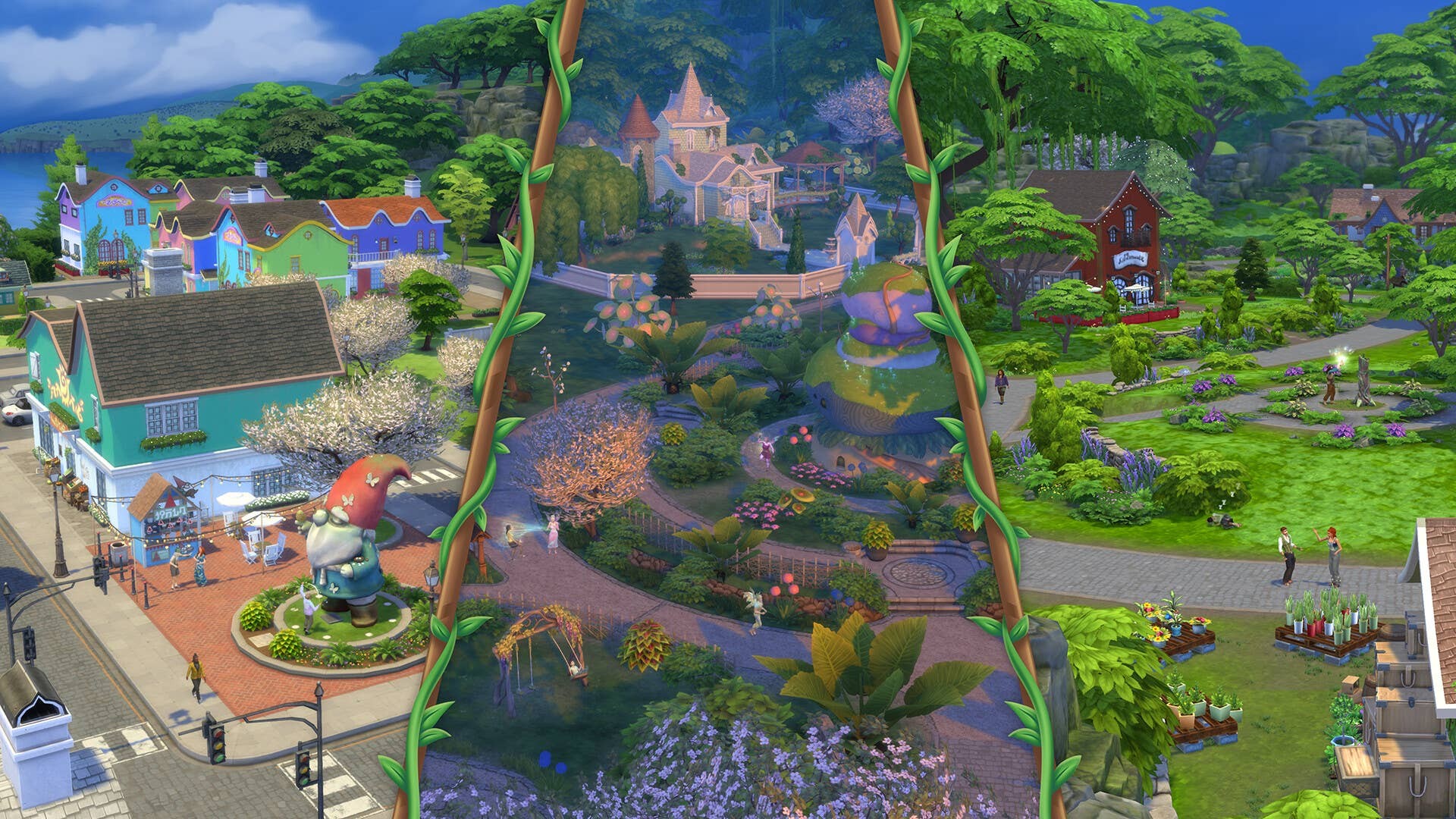Introduction
The journey of video games from their nascent stages in the 1990s to the sophisticated, open-world adventures of today is nothing short of a digital odyssey. As we traverse this fascinating timeline, we uncover the technological innovations, cultural shifts, and evolving player expectations that have transformed gaming into a billion-dollar industry and a central pillar of modern entertainment. From the pixelated charm of early platformers to the immersive realism of current VR experiences, this evolution has not only reshaped the games themselves but has also had profound impacts on the communities that surround them.
The 1990s: The Birth of Genres and the Pixel Revolution
The 1990s were a pivotal decade in gaming history, characterized by a burst of creativity and technological advancement. During this period, genres that would define the medium for decades to come were born. Games transitioned from simple arcade experiences to more complex, narrative-driven adventures.
The Rise of Platformers and Fighting Games
In the early 90s, platformers like “Super Mario World” and “Sonic the Hedgehog” dominated the gaming landscape. These titles showcased vibrant, pixelated graphics and introduced players to engaging, side-scrolling worlds filled with challenges and secrets. The allure of discovering hidden levels and mastering intricate platforming mechanics captured the imaginations of a generation.
Simultaneously, fighting games like “Street Fighter II” and “Mortal Kombat” carved out their niche. These games introduced competitive gameplay, pitting players against each other in skill-based combat. The emphasis on combos, special moves, and character selection laid the groundwork for the thriving e-sports scene we see today.
The Advent of 3D Graphics and the Rise of the RPG
The mid-90s witnessed a seismic shift with the advent of 3D graphics, revolutionizing game design and player experience. Titles such as “Super Mario 64” and “The Legend of Zelda: Ocarina of Time” showcased the potential of 3D environments, allowing for unprecedented exploration and interaction within game worlds. These games were not just technical marvels; they were pioneers in narrative depth and gameplay complexity.
Role-playing games (RPGs) also began to gain prominence, with titles like “Final Fantasy VII” setting new standards for storytelling and character development. These games offered players expansive worlds to explore, rich narratives to uncover, and complex character progression systems, broadening the appeal of video games to a wider audience.
The 2000s: Online Connectivity and the Mainstream Boom
As the new millennium dawned, gaming technology continued to evolve at a rapid pace. The 2000s were defined by the rise of online gaming and the mainstream acceptance of video games as a dominant form of entertainment.
The Online Revolution
The proliferation of broadband internet in the early 2000s brought about the online gaming revolution. Titles like “World of Warcraft” and “Halo 2” capitalized on this connectivity, enabling players to engage with each other in virtual worlds. Massive multiplayer online games (MMOs) and online multiplayer shooters became cornerstones of the industry, fostering global communities and competitive play.
This era also saw the rise of digital distribution platforms, such as Steam, which transformed how games were purchased and played. The convenience of accessing a vast library of titles online, coupled with regular updates and community features, further solidified gaming’s place in the digital age.
The Rise of the Casual and Mobile Gaming
While hardcore gamers reveled in complex online experiences, the 2000s also marked the rise of casual gaming. Platforms like the Nintendo Wii introduced motion controls, making gaming accessible to a broader audience. Titles such as “Wii Sports” and “Animal Crossing” attracted non-traditional gamers, emphasizing fun and accessibility over complexity.
The emergence of smartphones revolutionized gaming once again, with titles like “Angry Birds” and “Candy Crush Saga” capturing the attention of millions. Mobile gaming became a cultural phenomenon, making games more accessible and convenient than ever before.
The 2010s to 2025: The Era of Open Worlds and Virtual Realities
As we moved into the 2010s, the gaming industry continued to push boundaries, delivering experiences that were more immersive and expansive than ever before. The convergence of advanced hardware, sophisticated software, and creative storytelling has led to the creation of sprawling open-world games and the emergence of virtual reality (VR) as a viable gaming platform.
The Open-World Phenomenon
The 2010s saw the open-world genre reach new heights with titles like “The Witcher 3: Wild Hunt,” “Red Dead Redemption 2,” and “The Legend of Zelda: Breath of the Wild.” These games offered players vast, intricately detailed worlds to explore at their own pace, filled with dynamic ecosystems, rich narratives, and countless side quests.
The freedom and agency afforded by open-world games have redefined player expectations, encouraging developers to create experiences that are not only visually stunning but also deeply engaging. The emphasis on player choice and consequence has blurred the lines between genres, leading to innovative hybrid experiences that defy traditional categorization.
Virtual Reality and the Future of Immersion
The introduction of consumer-grade VR headsets, such as the Oculus Rift and HTC Vive, has ushered in a new era of gaming. VR offers unparalleled levels of immersion, transporting players into fully realized virtual environments where they can interact with the world around them in ways previously unimaginable.
Games like “Half-Life: Alyx” and “Beat Saber” have demonstrated the potential of VR, combining intuitive controls with breathtaking visuals to create experiences that are both physically and emotionally engaging. As technology continues to advance, the possibilities for VR in gaming—and beyond—are limitless.
Cultural Trends and the Evolution of Gaming Communities
The evolution of game genres and technology has been paralleled by significant cultural shifts within the gaming community. E-sports, indie game development, and the democratization of content creation have all played pivotal roles in shaping the modern gaming landscape.
The E-sports Explosion
E-sports, or competitive gaming, has grown from niche tournaments to a global phenomenon, with games like “League of Legends” and “Fortnite” drawing millions of viewers and offering lucrative prize pools. This growth has been fueled by advancements in streaming technology, allowing fans to watch live competitions from anywhere in the world.
The rise of e-sports has not only elevated gaming to a professional level but has also fostered a sense of community and camaraderie among fans and players alike. The competitive spirit and dedication required to excel in e-sports have made it a respected and legitimate form of entertainment.
The Indie Resurgence
While AAA titles dominate the market, the indie game scene has experienced a renaissance, thanks in part to digital distribution platforms and accessible development tools. Indie developers have produced innovative and unique experiences, such as “Undertale” and “Hollow Knight,” that challenge conventional gaming norms and offer fresh perspectives.
This resurgence has not only diversified the types of games available but has also empowered creators to tell personal and meaningful stories, resonating with players on a deeper level. The success of indie games has shown that creativity and passion can thrive alongside big-budget productions, enriching the gaming ecosystem as a whole.
Conclusion
The journey from 90s classics to the latest open-world adventures is a testament to the resilience and adaptability of the gaming industry. Technological advancements, cultural shifts, and evolving player preferences have all contributed to the rich tapestry of experiences available today. As we look to the future, the possibilities for gaming are boundless, promising new worlds to explore, stories to tell, and communities to build. Whether you’re a seasoned veteran or a newcomer to the gaming world, there’s no better time to be a gamer.
Tags: gaming history, game evolution, open-world games, VR gaming, e-sports, indie games, technological advancements, player preferences





